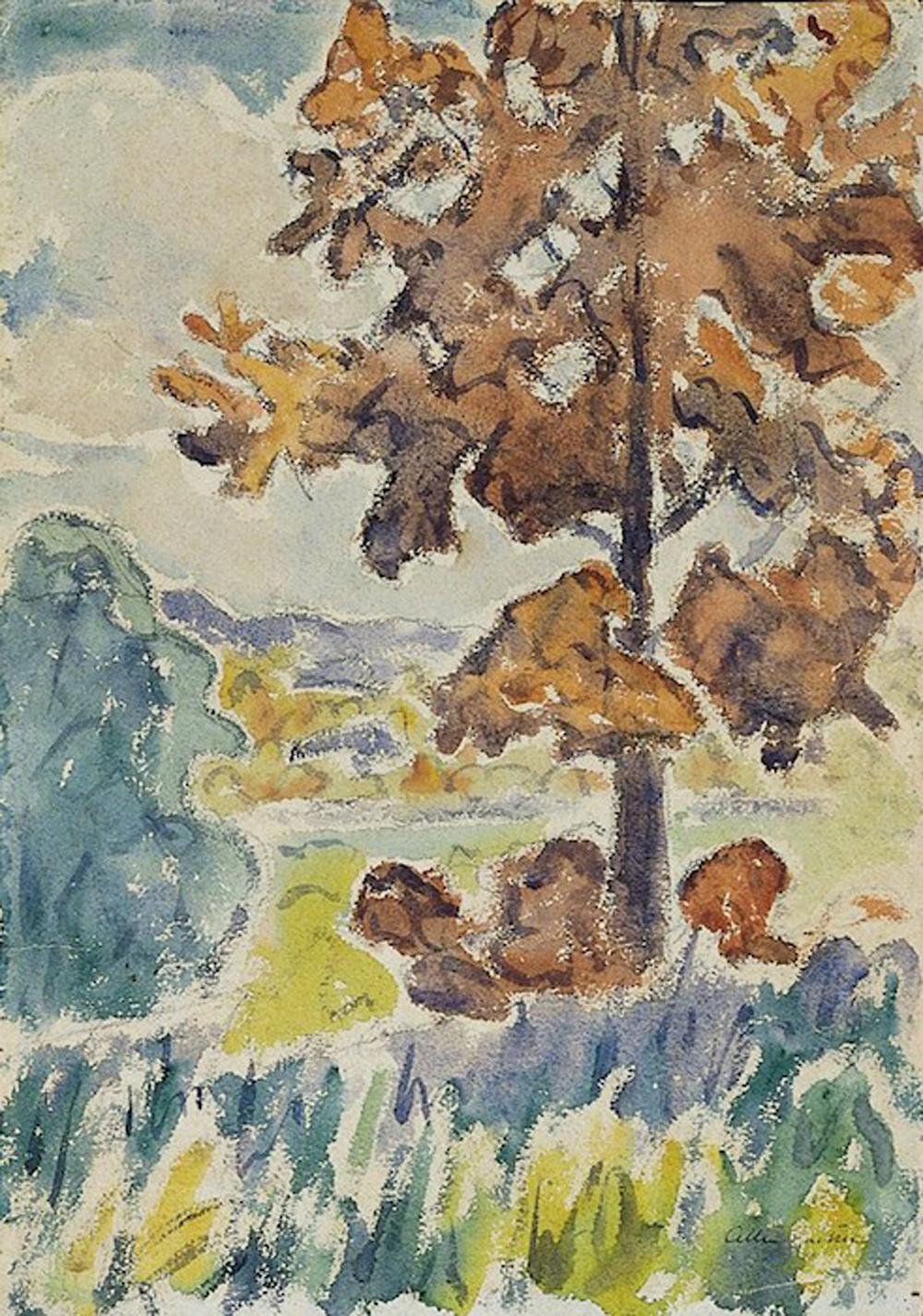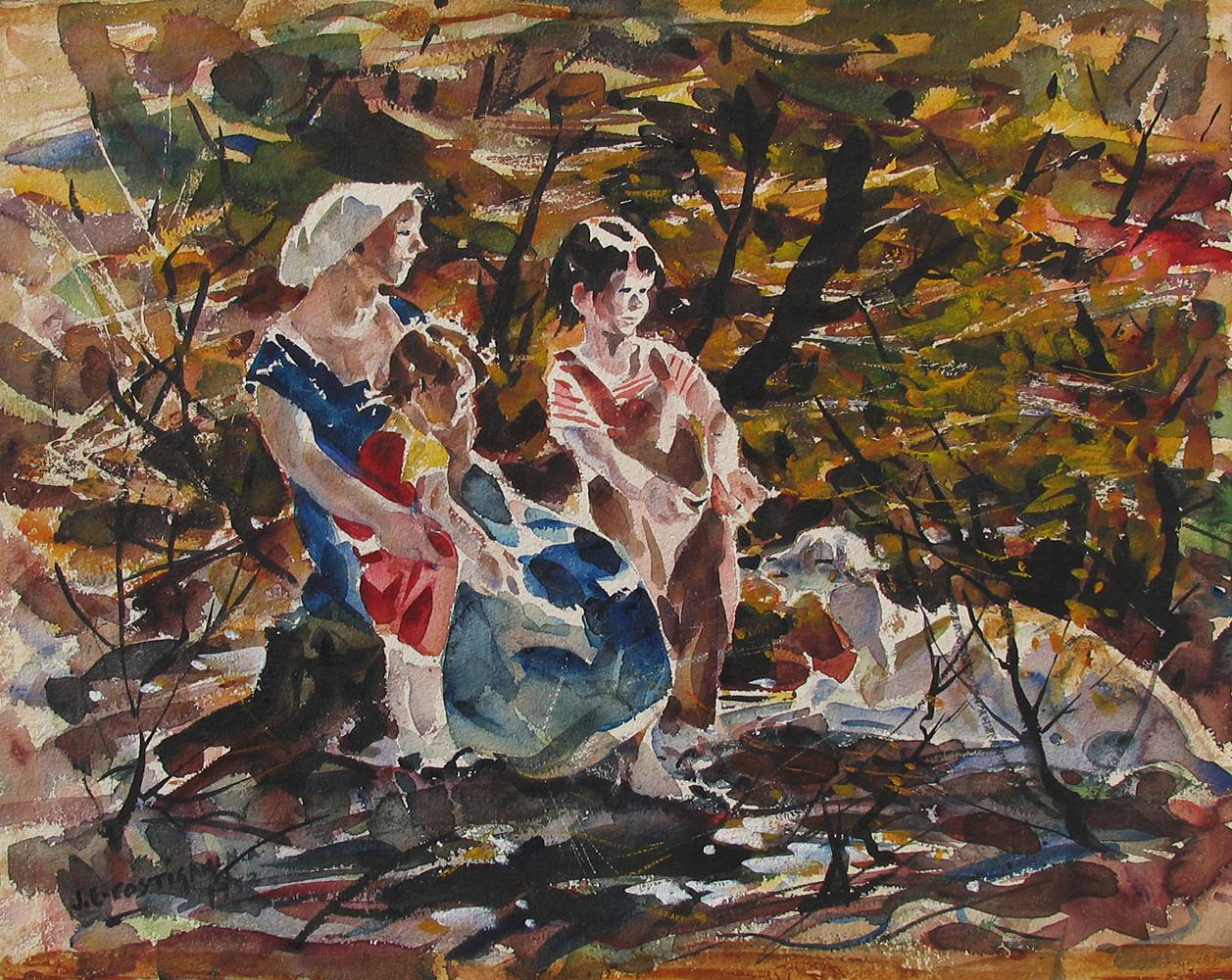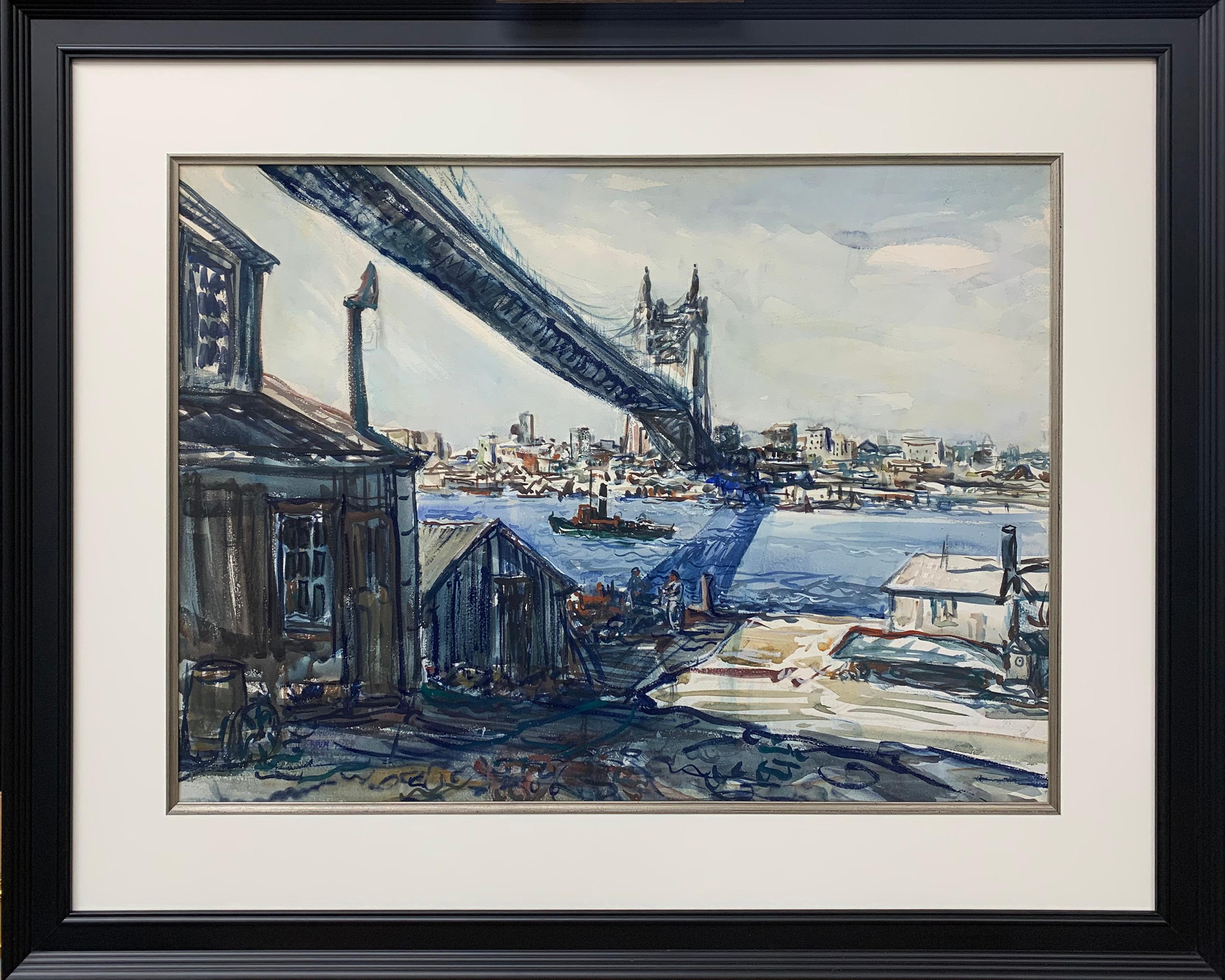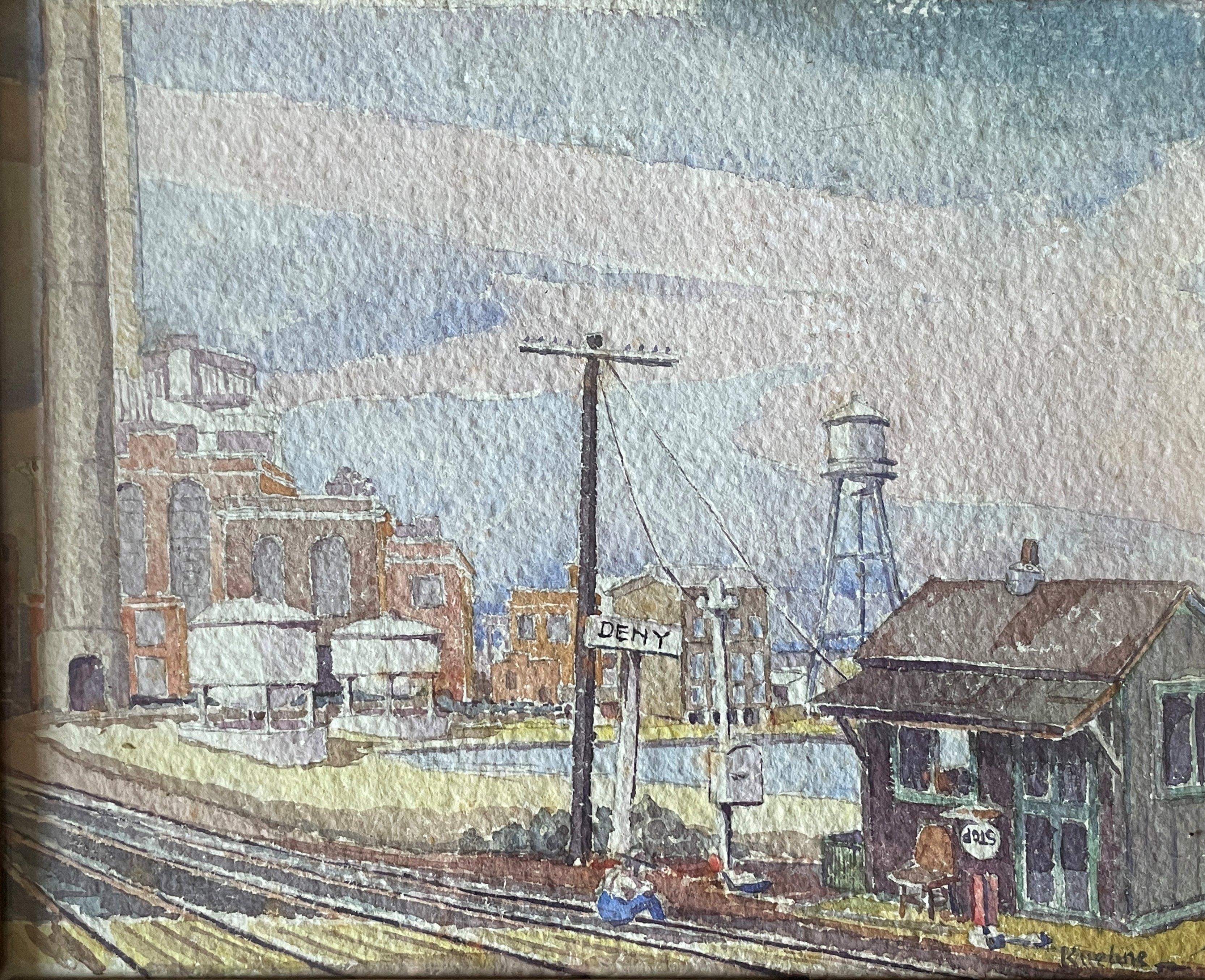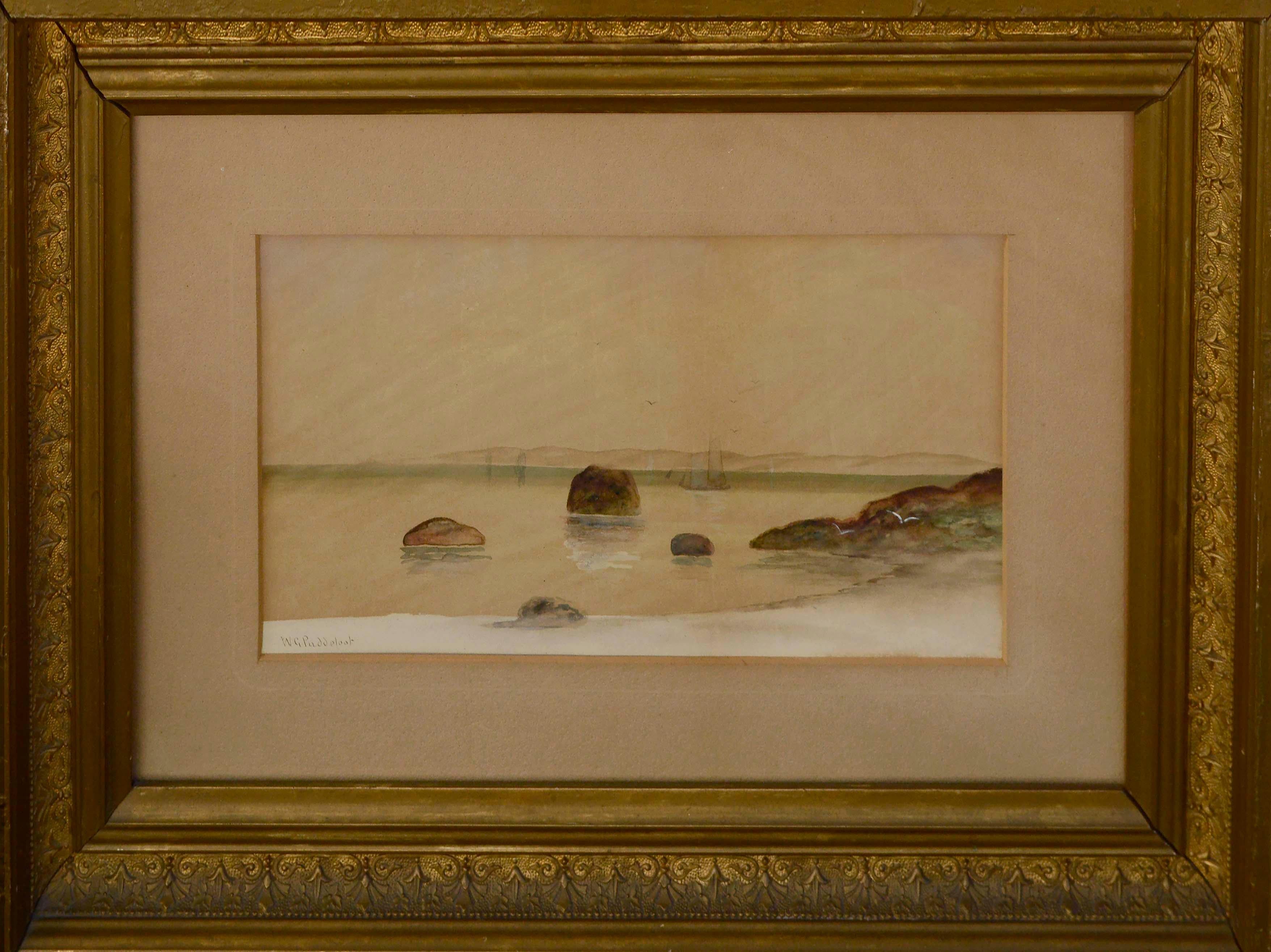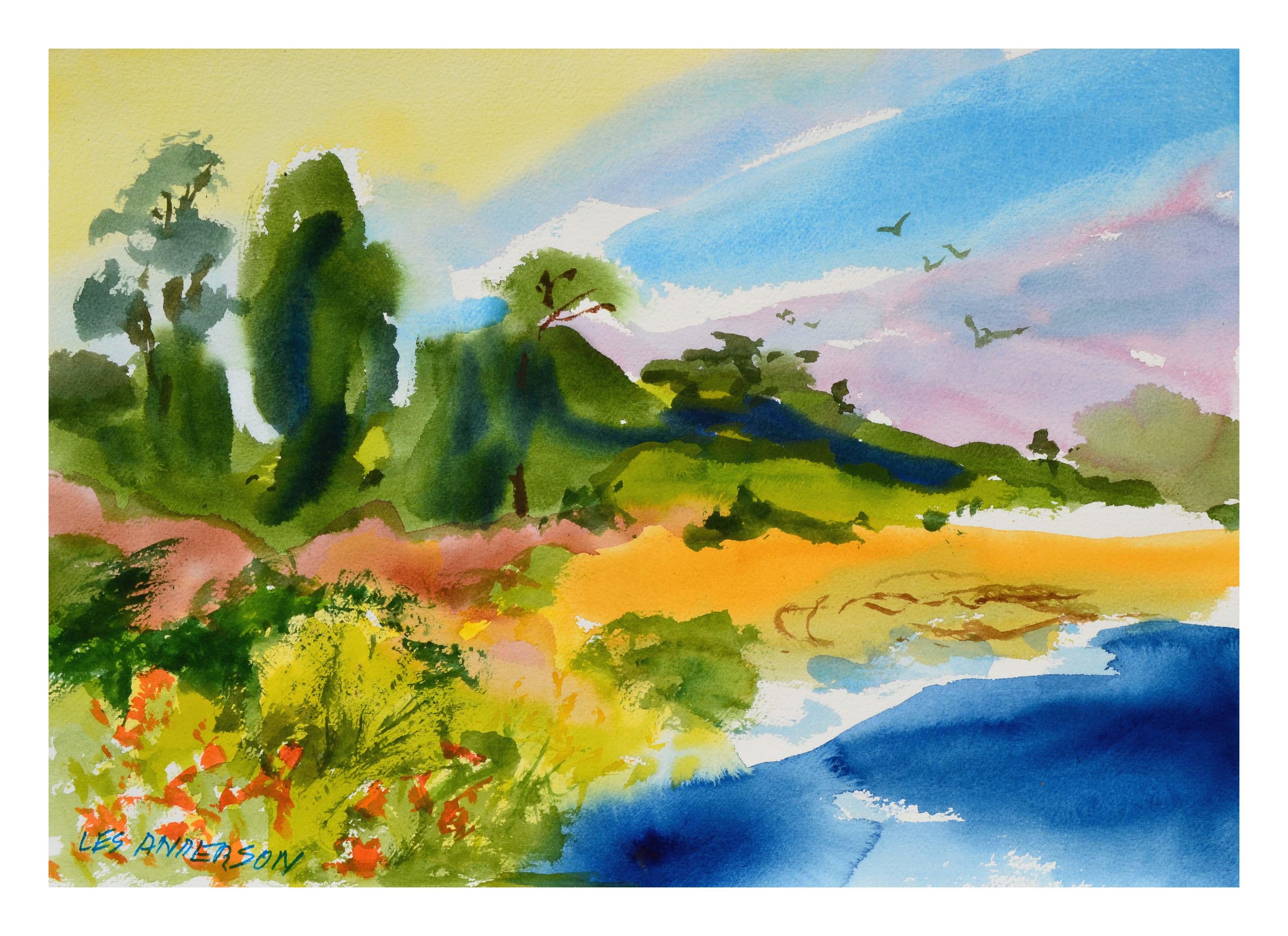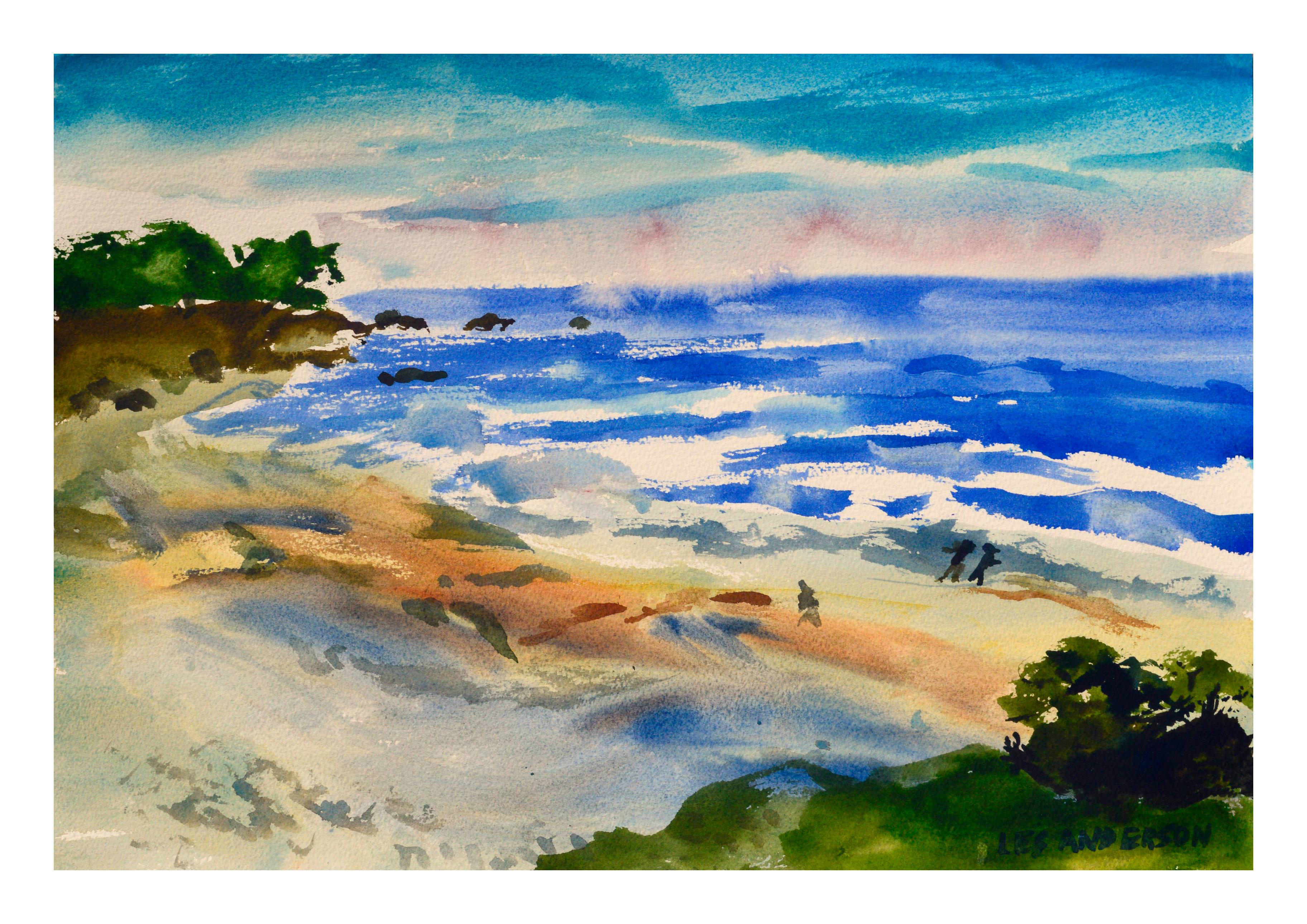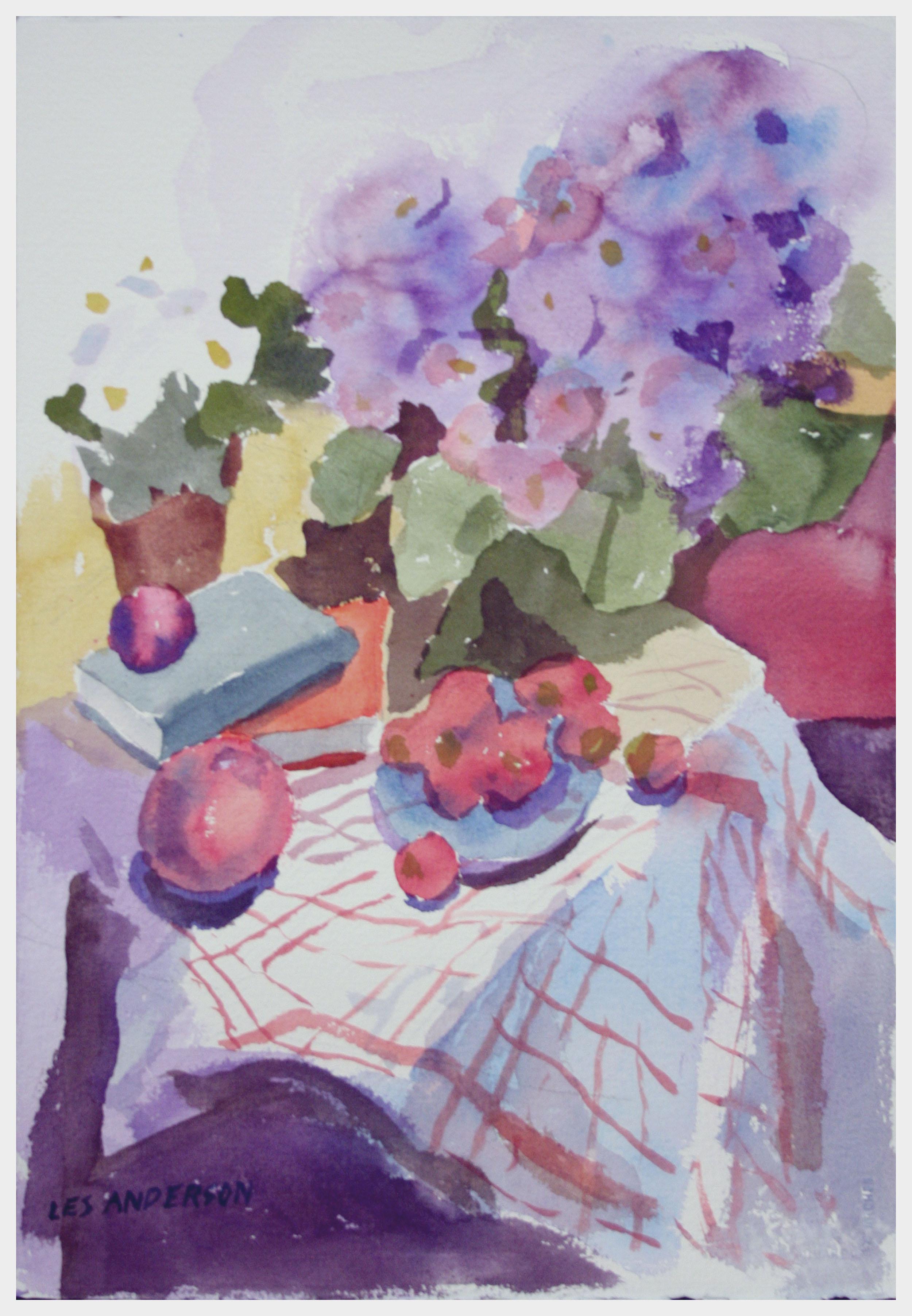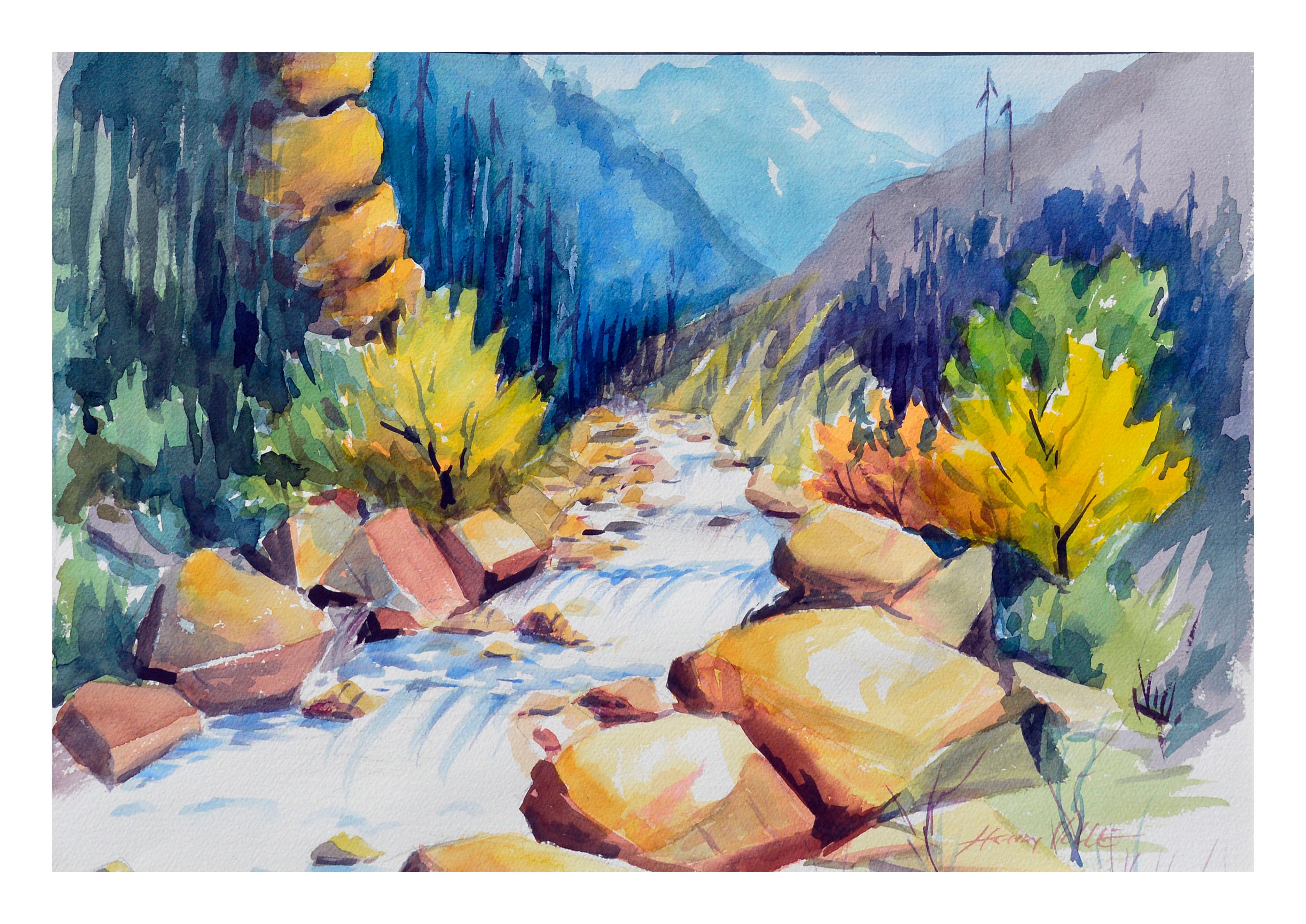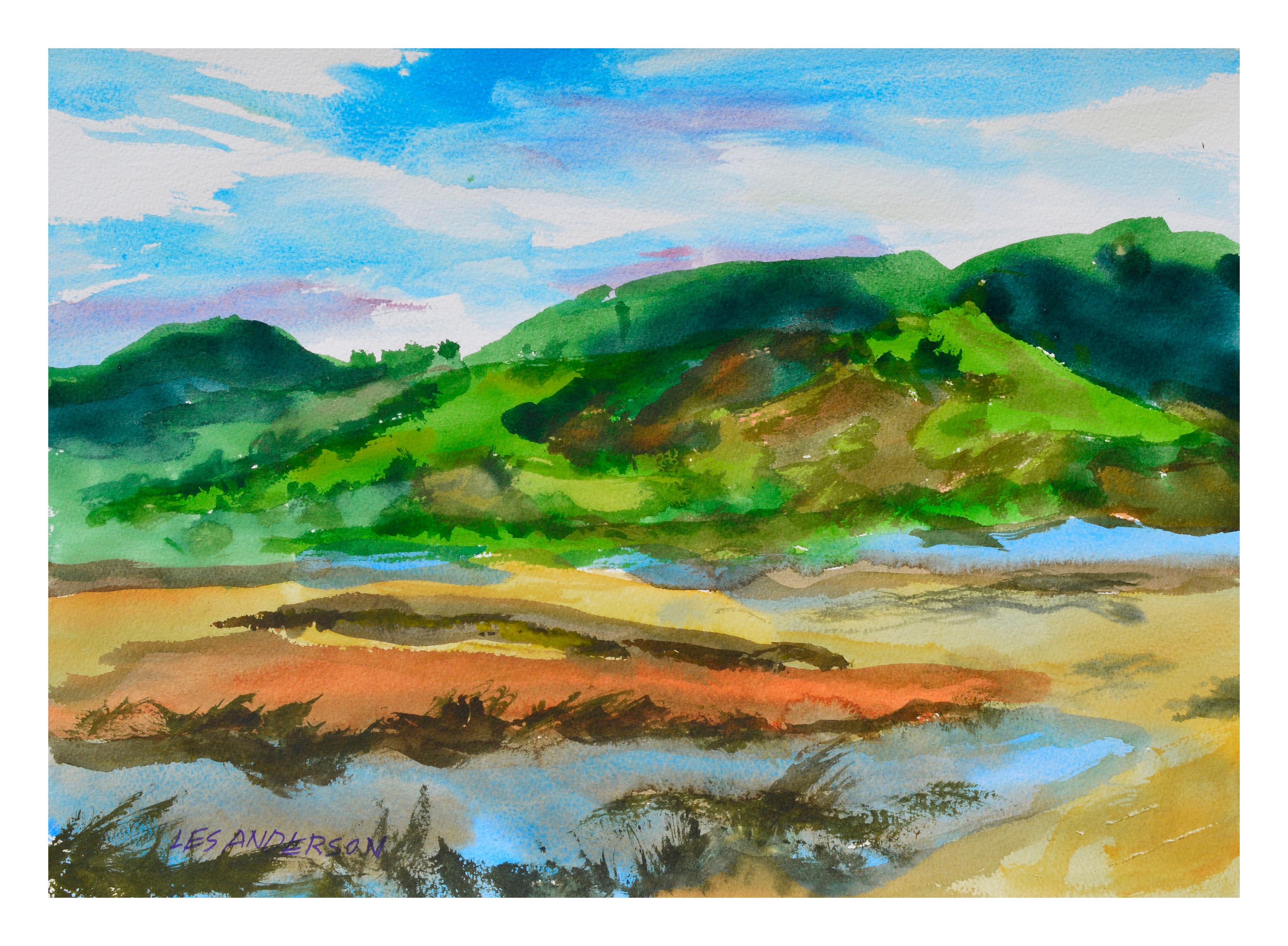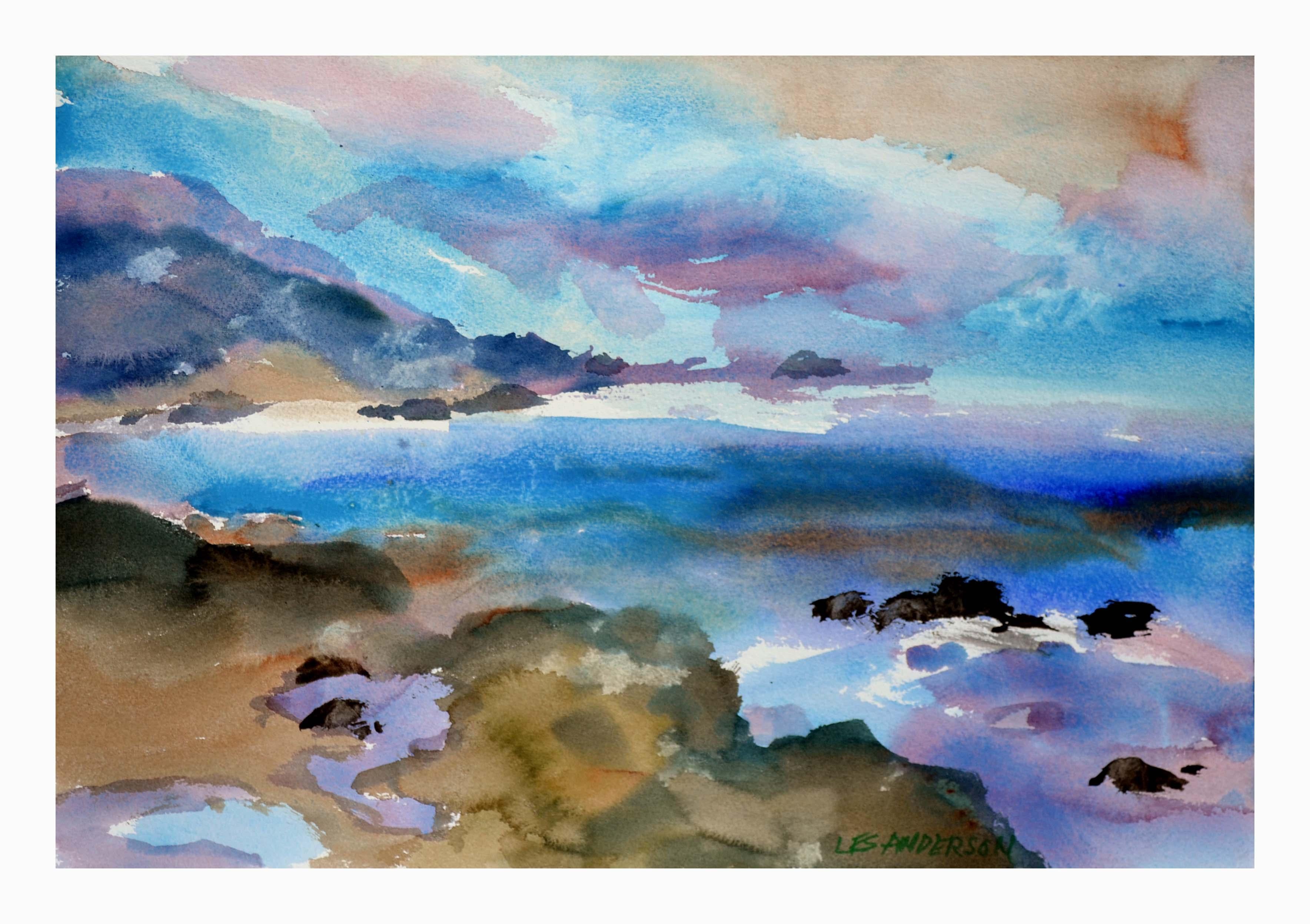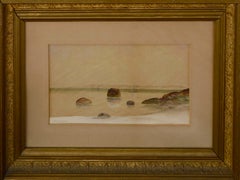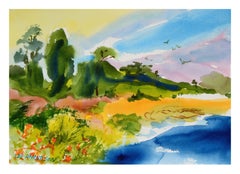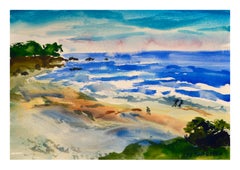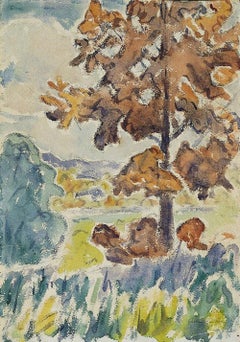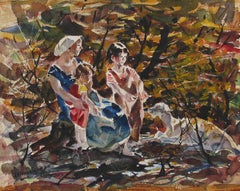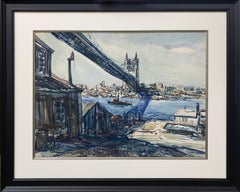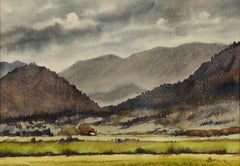
Willamette Valley View, Pacific Northwest Landscape Watercolor
View Similar Items
Want more images or videos?
Request additional images or videos from the seller
1 of 12
Walter Jim BrickWillamette Valley View, Pacific Northwest Landscape Watercolor
Price:$700
$850List Price
About the Item
- Creator:Walter Jim Brick (American)
- Dimensions:Height: 22 in (55.88 cm)Width: 28 in (71.12 cm)Depth: 0.25 in (6.35 mm)
- Medium:
- Movement & Style:
- Period:
- Condition:Tiny pinholes in corners of paper, as shown in last photo (not visible with mat).
- Gallery Location:Soquel, CA
- Reference Number:Seller: JT-78061stDibs: LU54210130482
About the Seller
5.0
Platinum Seller
Premium sellers with a 4.7+ rating and 24-hour response times
Established in 1986
1stDibs seller since 2014
2,969 sales on 1stDibs
Authenticity Guarantee
In the unlikely event there’s an issue with an item’s authenticity, contact us within 1 year for a full refund. DetailsMoney-Back Guarantee
If your item is not as described, is damaged in transit, or does not arrive, contact us within 7 days for a full refund. Details24-Hour Cancellation
You have a 24-hour grace period in which to reconsider your purchase, with no questions asked.Vetted Professional Sellers
Our world-class sellers must adhere to strict standards for service and quality, maintaining the integrity of our listings.Price-Match Guarantee
If you find that a seller listed the same item for a lower price elsewhere, we’ll match it.Trusted Global Delivery
Our best-in-class carrier network provides specialized shipping options worldwide, including custom delivery.More From This Seller
View All19th Century Landscape -- Cape Ann, Gloucester Harbor
Located in Soquel, CA
Late 19th century delicate watercolor of the harbor at Cape Ann, Gloucester, Massachusetts depicting rocks in the calm water along with seagulls and sailboats in the distance, by 19th century artist and Reverend William George Puddefoot (American, 1842-1925). Signed "W.G. Puddefoot" lower left. Titled on verso, "Cape Ann Scenery / Near Gloucester, Sunset". Presented in a carved giltwood frame and off-white mat.
Reverend William George Puddefoot [1842-1925] (also known as W C Puddefoot) was an artist, traveler, lecturer and the field secretary for the American Home Missionary Society [1826-1893]. For his work, Puddefoot traveled all over the US, lecturing and doing missionary work, including: Iowa, Minnesota, Indiana Pennsylvania, California and Connecticut. He was known for being an extremely colorful character especially in his sermons and lectures. Puddefoot wrote the book Minute Man...
Category
Late 19th Century American Impressionist Landscape Drawings and Watercolors
Materials
Paper, Watercolor
$1,080 Sale Price
20% Off
New Brighton Eucalyptus Landscape
By Les Anderson
Located in Soquel, CA
Beautiful watercolor of eucalyptus along New Brighton beach by Les (Leslie Luverne) Anderson (American, 1928-2009). From the estate of Les Anderson in Mon...
Category
Late 20th Century American Impressionist Landscape Drawings and Watercolors
Materials
Watercolor, Archival Paper
$300 Sale Price
20% Off
Vintage Coastal Figurative Landscape -- Walk on the Beach Watercolor
By Les Anderson
Located in Soquel, CA
Beautiful vintage watercolor of a coastal landscape with two figures walking along the beach by Les (Leslie Luverne) Anderson (American, 1928-2009). From the estate of Les Anderson i...
Category
Late 20th Century American Impressionist Landscape Drawings and Watercolors
Materials
Watercolor, Archival Paper
$396 Sale Price
20% Off
Primroses and Fruit Still Life
By Les Anderson
Located in Soquel, CA
Vibrant watercolor still life of primroses and fruit by Les (Leslie Luverne) Anderson (American, 1928-2009). Signed "Les Anderson" bottom left. Unframed. Image size: 15"H x 23"W
Le...
Category
Late 20th Century American Impressionist Landscape Drawings and Watercolors
Materials
Watercolor, Archival Paper
$340 Sale Price
20% Off
Mountain River Watercolor Landscape
By Henry Hank Volle
Located in Soquel, CA
Colorful mountain river watercolor painting by Henry "Hank" Volle (American, 20th Century). Signed "Henry Volle" lower right. Artists bio on verso. Pre...
Category
1970s American Impressionist Landscape Drawings and Watercolors
Materials
Paper, Watercolor
$460 Sale Price
20% Off
Hillside Lake Watercolor Landscape
By Les Anderson
Located in Soquel, CA
Colorful watercolor landscape of a lake surrounded by mountains by California artist Les (Leslie Luverne) Anderson (American, 1928-2009). From the estate of Les Anderson in Monterey,...
Category
Late 20th Century American Impressionist Landscape Drawings and Watercolors
Materials
Watercolor, Archival Paper
$340 Sale Price
20% Off
You May Also Like
Rocks and Sea
By Robert Swain Gifford
Located in Bryn Mawr, PA
Born on a small island near Martha's Vineyard, R. Swain Gifford and his family moved to the New Bedford, Massachusetts, area when he was two years old. The Dutch marine painter Alber...
Category
Late 19th Century American Impressionist Landscape Drawings and Watercolors
Materials
Paper, Watercolor
Watercolor of the Oak Tree by Allen Tucker
By Allen Tucker
Located in Hudson, NY
Landscape watercolor by Allen Tucker of an oak tree. This piece, along with several others, was gifted to Una Brage, a friend of the artist in the 1930s.
More about this artist:
Allen Tucker, was an architect and painter so influenced by Vincent Van Gogh that he was called "Vincent in America". (Gerdts 291) Robert Henri and Maurice Prendergast were also credited as having an influence on Tucker's brushwork and compositions, the latter decisively. However, as his painting evolved, he did not fit into any tidy slot for description and was known as an individualist not easily categorized in American art history.
Tucker was born in Brooklyn in 1866 and graduated from the School of Mines of Columbia University with a degree in architecture and took a job as an architectural draftsman in the architectural firm of McIvaine and Tucker, his fathers business. During that time, he studied painting at the Art Students League with Impressionist John H. Twachtman, but it was not until around 1904, when he was 38, that Tucker became a full-time painter, leaving architecture behind. Many of his early canvases were classically Impressionistic with poplar trees resembling those of Van Gogh and haystacks and corn shocks...
Category
Early 20th Century American Impressionist Landscape Drawings and Waterco...
Materials
Paper, Watercolor
Mother and Children watercolor painting by John E. Costigan
By John Costigan
Located in Hudson, NY
Painting measures 22" x 28" and framed 26" x 32" x 2"
Hand-signed "J.E. Costigan NA 1952" lower left.
About this artist: John Costigan was a self-taught painter distinguished by h...
Category
Mid-20th Century American Impressionist Figurative Drawings and Watercolors
Materials
Paper, Watercolor
59th Street Bridge, Pennsylvania Impressionist Watercolor Cityscape
By Walter Emerson Baum
Located in Doylestown, PA
"59th Street Bridge" is a 22" x 30" watercolor on paper cityscape of the Brooklyn Bridge and city skyline, painted by Pennsylvania Impressionist and...
Category
1940s American Impressionist Landscape Drawings and Watercolors
Materials
Watercolor, Archival Paper
"Train Station, " Max Kuehne, Industrial City Scene, American Impressionism
By Max Kuehne
Located in New York, NY
Max Kuehne (1880 - 1968)
Train Station, circa 1910
Watercolor on paper
8 1/4 x 10 1/4 inches
Signed lower right
Provenance:
Private Collection, Illinois
Max Kuehne was born in Halle, Germany on November 7, 1880. During his adolescence the family immigrated to America and settled in Flushing, New York. As a young man, Max was active in rowing events, bicycle racing, swimming and sailing. After experimenting with various occupations, Kuehne decided to study art, which led him to William Merritt Chase's famous school in New York; he was trained by Chase himself, then by Kenneth Hayes Miller. Chase was at the peak of his career, and his portraits were especially in demand. Kuehne would have profited from Chase's invaluable lessons in technique, as well as his inspirational personality. Miller, only four years older than Kuehne, was another of the many artists to benefit from Chase's teachings. Even though Miller still would have been under the spell of Chase upon Kuehne's arrival, he was already experimenting with an aestheticism that went beyond Chase's realism and virtuosity of the brush. Later Miller developed a style dependent upon volumetric figures that recall Italian Renaissance prototypes.
Kuehne moved from Miller to Robert Henri in 1909. Rockwell Kent, who also studied under Chase, Miller, and Henri, expressed what he felt were their respective contributions: "As Chase had taught us to use our eyes, and Henri to enlist our hearts, Miller called on us to use our heads." (Rockwell Kent, It's Me O Lord: The Autobiography of Rockwell Kent. New York: Dodd, Mead and Co., 1955, p. 83). Henri prompted Kuehne to search out the unvarnished realities of urban living; a notable portion of Henri's stylistic formula was incorporated into his work.
Having received such a thorough foundation in art, Kuehne spent a year in Europe's major art museums to study techniques of the old masters. His son Richard named Ernest Lawson as one of Max Kuehne's European traveling companions. In 1911 Kuehne moved to New York where he maintained a studio and painted everyday scenes around him, using the rather Manet-like, dark palette of Henri.
A trip to Gloucester during the following summer engendered a brighter palette. In the words of Gallatin (1924, p. 60), during that summer Kuehne "executed some of his most successful pictures, paintings full of sunlight . . . revealing the fact that he was becoming a colorist of considerable distinction." Kuehne was away in England the year of the Armory Show (1913), where he worked on powerful, painterly seascapes on the rocky shores of Cornwall. Possibly inspired by Henri - who had discovered Madrid in 1900 then took classes there in 1906, 1908 and 1912 - Kuehne visited Spain in 1914; in all, he would spend three years there, maintaining a studio in Granada. He developed his own impressionism and a greater simplicity while in Spain, under the influence of the brilliant Mediterranean light. George Bellows convinced Kuehne to spend the summer of 1919 in Rockport, Maine (near Camden). The influence of Bellows was more than casual; he would have intensified Kuehne's commitment to paint life "in the raw" around him.
After another brief trip to Spain in 1920, Kuehne went to the other Rockport (Cape Ann, Massachusetts) where he was accepted as a member of the vigorous art colony, spearheaded by Aldro T. Hibbard. Rockport's picturesque ambiance fulfilled the needs of an artist-sailor: as a writer in the Gloucester Daily Times explained, "Max Kuehne came to Rockport to paint, but he stayed to sail." The 1920s was a boom decade for Cape Ann, as it was for the rest of the nation. Kuehne's studio in Rockport was formerly occupied by Jonas Lie.
Kuehne spent the summer of 1923 in Paris, where in July, André Breton started a brawl as the curtain went up on a play by his rival Tristan Tzara; the event signified the demise of the Dada movement. Kuehne could not relate to this avant-garde art but was apparently influenced by more traditional painters — the Fauves, Nabis, and painters such as Bonnard. Gallatin perceived a looser handling and more brilliant color in the pictures Kuehne brought back to the States in the fall. In 1926, Kuehne won the First Honorable Mention at the Carnegie Institute, and he re-exhibited there, for example, in 1937 (Before the Wind). Besides painting, Kuehne did sculpture, decorative screens, and furniture work with carved and gilded molding. In addition, he designed and carved his own frames, and John Taylor Adams encouraged Kuehne to execute etchings. Through his talents in all these media he was able to survive the Depression, and during the 1940s and 1950s these activities almost eclipsed his easel painting. In later years, Kuehne's landscapes and still-lifes show the influence of Cézanne and Bonnard, and his style changed radically.
Max Kuehne died in 1968. He exhibited his work at the National Academy of Design, the Art Institute of Chicago, the Carnegie Institute in Pittsburgh, the Memorial Art Gallery of the University of Rochester, and in various New York City galleries. Kuehne's works are in the following public collections: the Detroit Institute of Arts (Marine Headland), the Whitney Museum (Diamond Hill...
Category
1910s American Impressionist Landscape Drawings and Watercolors
Materials
Paper, Watercolor
“The Mountains of St. Maurice”
By Dodge Macknight
Located in Southampton, NY
Original watercolor on archival paper of the mountains of Saint Maurice in Switzerland by the well known American artist, Dodge MacKnight. Signed lower left and titled and dated 189...
Category
1890s American Impressionist Landscape Drawings and Watercolors
Materials
Watercolor, Archival Paper
$2,240 Sale Price
20% Off
Recently Viewed
View AllMore Ways To Browse
Ink And Wash Landscape Painting
Original Boat Drawing
19th Century English Landscape Watercolor
Drawing Woodlands
Shell Watercolor
19th Century English Landscape Watercolor Paintings
Charcoal Landscape Black And White
Sailboat Drawing
Watercolor Fountain
Gothic Watercolour
Cattle Watercolor
Venetian Watercolor Art
Graphite Drawing Tree
Sailboat Watercolor
Watercolor Farmhouse
Fisherman Watercolor
Watercolour Landscape Vienna Paintings
Notre Dame Watercolor

